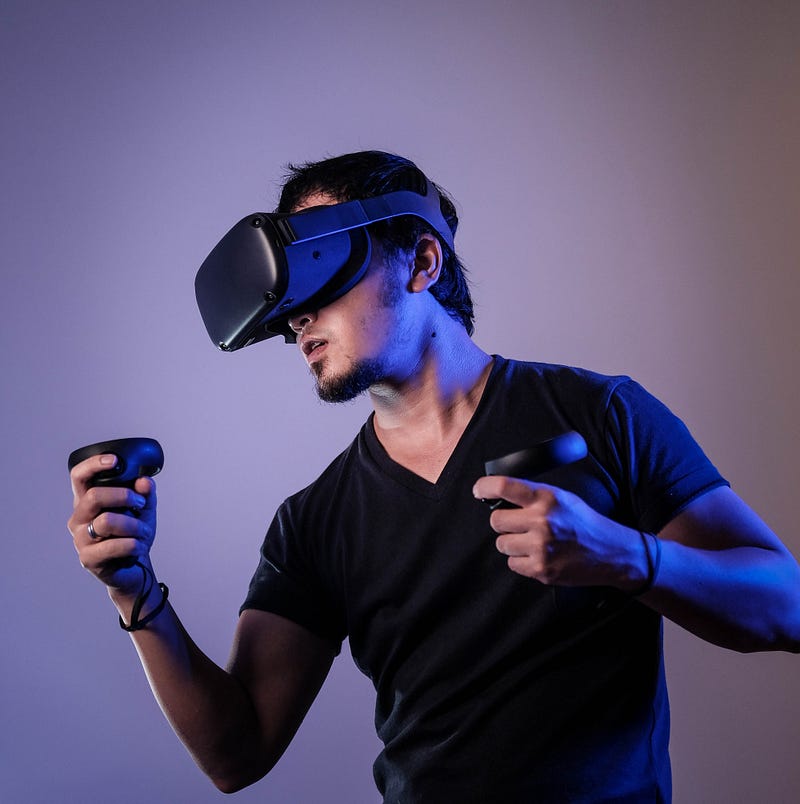Navigating Augmented Reality: The Importance of Critical Thinking
Written on
Chapter 1: Understanding Information in Today's Society
In our current world, we are inundated with information. This abundance has led experts to coin the term "information society" to capture the essence of our data-rich environment. However, merely having access to vast amounts of information does not inherently make us wiser. In fact, it often leads to the opposite effect.
As noted by researchers David and Foray (2002), information remains raw data until it is interpreted by knowledgeable individuals. This is the essence of a "knowledge society," where we transform information into actionable insights.
UNESCO (2005) highlights the necessity of developing critical thinking skills within a knowledge society to differentiate between valuable and trivial information. This initial step is vital, but it’s merely the beginning.
To truly harness the power of information, we must derive meaning and comprehension from what we encounter. This is where Augmented Reality (AR) plays a crucial role.
AR integrates virtual elements into our physical surroundings. Imagine wearing AR glasses that overlay digital information onto the real world, enhancing your experience rather than replacing reality. AR isn’t limited to gaming; it has applications in education, healthcare, and tourism, showcasing how information can be utilized in real-life scenarios.
Consider how AR transforms our interaction with information and knowledge creation. While recent technological advancements, such as improved internet connectivity, have facilitated access to data, AR takes it a step further by augmenting our perception of reality. Unlike Virtual Reality (VR), which immerses users in a completely fabricated environment, AR enhances our existing reality.
However, engaging with AR requires a certain level of understanding. For example, in neurosurgery, AR can provide helpful imagery for surgeons, but without the requisite medical knowledge, the information may be incomprehensible.
Therefore, AR should be viewed not as a magical solution that instantly grants expertise, but as a valuable tool that aids in connecting information with understanding.
Section 1.1: The Spectrum of Information
Imagine a spectrum where at one end lies straightforward, spatially and temporally presented verbal information. For instance, utilizing an AR app while visiting a museum can reveal details about a current exhibition, such as Gustav Klimt's key works and their symbolic meanings.
If you can engage with that information — discussing Klimt's art in your own terms or linking it to other artists — you have successfully converted information into knowledge. Yet, AR is not an infallible remedy; it does not guarantee that everyone will grasp concepts effortlessly. Some of the information presented can be complex, requiring effort to transform into true understanding.
Subsection 1.1.1: The Practical Applications of AR

Teachers can leverage AR to provide interactive lessons by overlaying visuals and text onto real-world scenarios. For example, learning about anatomy by observing muscles and bones on one’s own arm is an engaging approach.
Conversely, when shopping with AR, you can visualize how clothing fits without physically trying it on. This application of information enhances clarity and comprehension, almost reminiscent of magic.
Section 1.2: The Need for Critical Thinking
However, the ease of using AR can sometimes lead to complacency in critical thinking. Users may accept information at face value without skepticism, which is a potential pitfall.
Let’s explore a few reasons why critical thinking is essential in the context of AR.
Firstly, AR can inadvertently direct us toward specific choices while obscuring better alternatives. For instance, an app might highlight one option as the best, but there could be equally valid choices that remain hidden.
Secondly, AR may present information out of context or at inappropriate times. If you seek details about a location and are bombarded with overwhelming data, discerning reliability can be challenging.
Moreover, AR has the potential to monitor and manipulate perceptions without users’ awareness. This underscores the necessity of questioning the information presented rather than accepting it as absolute truth.
Chapter 2: Harnessing the Power of Critical Thinking
In the video "Why Virtual Reality is Necessary on a Planet of 11 Billion," the discussion revolves around the significance of emerging technologies like AR and VR in addressing global challenges.
Another insightful video, "Introducing Dr. Alistair Dias," delves into the implications of AR and other technologies in enhancing various fields.
In this era of advanced AR technology, it is crucial to exercise our intellect. Critical thinking serves as our greatest asset, enabling us to make informed decisions, avoid deception, and perceive reality accurately. While AR is undoubtedly fascinating, we must not lose ourselves in the allure of novelty. Engage thoughtfully, question critically, and remain vigilant!